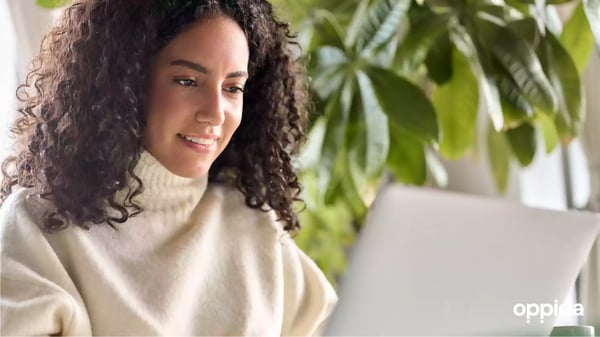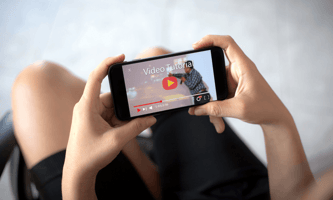In the realm of adult education, the focus isn't merely on delivering content but on engaging...
Are we using too much media in education? The answer will surprise most course creators

In mid-October Merlin Crosley published the thought-provoking article, ‘For great teaching media isn’t the message‘, in Campus Morning Mail. This sparked a conversation initiated by Bianca Raby concerning the use of media in education.

The first point of discussion touched on how content saturation is dealt with in academia. Curating an effective blended learning experience that is constructively aligned is a fine line. For example, following the ‘bite sized’ learning trend that involves shorter videos and engaging elements of what some may consider as ‘edutainment’, can leave learners confused, distracted and learning ineffectively at times. Conversely, online learning experiences with heavy content volume and the absence of engaging elements can cause learners to lose interest.
Finding the perfect media in education balance on the multidimensional continuum of effective learning, learner engagement, and financial viability is a complicated process. This is a craft that educators, subject matter experts, and academics creating online learning experiences are constantly striving to master to raise the bar in education.
Watch the full interview about media in education or dive into the video transcript!
Video Transcript
Bianca: Hi, I’m here today with Merlin Crosley from UNSW, and my name is Bianca Raby and I’m the CEO and founder of Oppida. And we’re here just to have a conversation about teaching and media after a really thought provoking article Merlin published in Campus Morning Mail a couple of weeks ago. So, maybe you can just quickly introduce yourself as well.
Merlin: Yeah, so I’m Merlin Crosley, Deputy Vice Chancellor academic quality at the University of New South Wales. I started as a university lecturer in 1995, teaching molecular biology, and I’ve been in universities ever since.
Bianca: Awesome, awesome. So, it’s great to have your perspective in this conversation, because media has been one of the things that Oppida has really tried to lead with and get excited about and trying to help people understand how to create everlasting media that can actually get an ROI. I was really excited to see your article that sparked a lot of things that we’ve been talking about internally, and in the conversations we have with our clients. And I think one of my first points I wanted to pick up from your article was this idea that content is everywhere. And I’ve been saying for a while that it’s not content that’s king anymore, it’s curation that’s king. And so how do you see the universities are dealing with this problem where they used to be the gatekeepers of the content, and now the content is freely available? And if we think about it in terms of media, you can just type into YouTube, or Google, or anything a question and that will spit you out some responses. Whether or not those responses are accurate, that’s another conversation. But you will get an answer to your questions. And so in the past, we used to go to libraries, or we’d go to people wiser than us. So, how are you seeing academia deal with this particular content saturation problem?
Merlin: Yes, so I think it’s a real challenge. I think that students can’t make their own courses very easily because they get lost, there’s too much information as you said, and not all of it is along a coherent pathway. So, I think about the things I like doing when I’m on a plane. If I’m going overseas, I like to get a box set and watch episode one, episode two, episode three. I love the narrative, I love to get into it. I don’t like watching three different films. And I think students also want to get that coherent, full narrative. And I agree with you, they need a curated product, and they need something that makes sense to them. And each bit builds on the last bit. So, that’s the academic’s job to do that.
Bianca: Which brings me to the next part of your article I wanted to pick out, which is this academic pride idea. Because it’s all one thing to say ‘let’s curate what’s already out there’, but that actually means that you’re not really the author of the content, per se. So, if you’re curating just what’s already been created, there’s a way to do it, but there’re little ways to put your flavour on things. So, that is one of the biggest challenges for teachers and educators anywhere, but especially academics. They have a particular way that they want to deliver that information. And of course, they’re not going to find it on the internet, because it’s got to be created by them.
Merlin: I think that’s right. Academics, like all people, have pride in their work. It’s a bit like this, it’s that if you’re going out with friends, people make jokes. You might tell one formulaic joke; ‘oh, a funny thing happened on the way to the forum’ and that sort of thing. But you would also make spontaneous jokes. And I think what will happen in courses is there’ll be some curated products, where the teacher will say, ‘hey, this is the best short video I’ve ever seen, you should all see this.’ But the other times the academic will be leading the person between those sorts of brought-in highlights. So, it will be a mixture. And we do that a bit already.
Bianca: Yeah, and I guess that’s kind of that’s really way of saying ‘blended’. I mean, that is a blended learning experience where you have some stuff that is done asynchronously, and some stuff is done synchronously. And I think what you’re hitting on there is the design of the program around, how do you bring in that academic personality into the course, but also not have to recreate everything? Have you seen that been done really well? Like, where have you seen that work? Where you have had academics with the with the media and been able to do that?
Merlin: So, there’s two things in the old days, we did it with a textbook. We’d show a couple of pictures and some text and would say, ‘here, have a look at this and go away and read chapter two, and we’ll discuss that next week.’ Nowadays, we see it more with videos. So people will say, ‘okay, let’s have a chat about this. Now let’s watch this video together. Well, what do we get out of that?’ And those sorts of things. People mostly get timetabled in one hour or two hour slots. The idea that everything would be seven minute videos because people say that’s a good time to concentrate… It doesn’t happen. The students don’t always, in my experience, seem to like too many seven minute videos, they get lost.
Bianca: Yeah. Yeah, that’s interesting. Because yeah, we keep saying ‘bite sized’. But I guess that whole argument relates to the ‘just in time’ learning idea, and the on the fly learning idea. So, are you saying that, if you were to sit down as students to sit down and to do an online course or blended course, they’re going to be allocating a couple of hours, so they want to just get through things? Right? Is that what you’re referring to?
Merlin: Yeah, I think so. I think a series of good, long jogs is probably a better than a sprint 20 times a day. I think that people just get too confused. I think this is the real challenge. There’s just too much information, too many paths. People can’t weigh what’s significant and really allow that to absorb. Too many punch lines. So, I think this is the thing about reading a good book. There’s still something in that.
Bianca: Yep. I agree. We’ve had some clients come to us, you know, academics or subject matter experts, and they’ve given us 10 additional readings. And I’m like, if there’s 10 of them, they obviously are not important, because you would have integrated them into the learning outcomes. If they’re not constructively aligned, if they don’t match, don’t put them there, because you’re just going to drown. Because there are some students who will do every single one of them, and then freak out that they can’t get the assignments done, right? Because there’s too much content, right?
Merlin: Yep. Yep. It’s very much it’s the same with museums and things. There’s some museums that show you, everything. And the other says, we’re just gonna take the best Grecian urn, we could find and we’ll just put one there. And sometimes that’s better. But it’s hard. It’s hard to make those calls.
Bianca: It’s definitely hard, especially when this hasn’t been as much of a necessity. I often use this joke in some of my presentations about who has a bigger attention span, a goldfish or a human. And now it’s actually a goldfish. And so we’ve dropped our attention span more and more every year. And so we’re getting worse at paying attention. But, there’s also something to your argument. I really believe in sitting down and being focused, and that’s actually part of the discipline of learning, right?
Merlin: Yeah, and to do it again, and again, and again. So, when you learn a new skill, like juggling, you have to just practice stage one again, and again, and again. And sometimes in teaching, you can actually give someone the same information three times in slightly different ways. Intuitive ways of doing that.
Bianca: Yeah, great. And so how do you see media being used by academia? Because I really liked your argument about how they can’t invest in these big platforms, because we’re never going to get the ROI on them for these big video based masterclass models because that’s not their business model. So, how do you see video being used? Because we know that the students are asking for video, but we also know they’re not asking for recorded lectures. So, what is the middle ground?
Merlin: I think it’s a really hard question. So, there’s two different angles. What do the students want? Then, what’s best for their learning? And there’s a third angle. What can be done in a financially stable and sustainable way? So, you’ve got to choose two of those three. You know, it’s hard to get all three of them and I’m troubled by this. I don’t have the answer to how we solve that financial one and that really bothers me a little bit. I think we will gradually work out what students like best. We’ll probably put a range of things up and find some of them are never used, and some of them most of the students use. So I think we’ll get that answer. But I am worried about this cost of constantly trying to make high quality digital products. And I think we need to get a production line way of doing it.
Bianca: Absolutely. Yeah. And I think that’s, that is the biggest problem I think we face because we do sell full production as part of our suite at Oppida, and it is costly. I’ve been in there at every stage of that process and it’s time-consuming. And to get that video to be where you want it to be, it takes a lot of learning and effort. And so it isn’t something that you can just do with a couple hundred dollars. It’s a big investment.
Merlin: It is, isn’t it? And we were sort of spoiled, because using a blackboard, or even writing a book wasn’t that expensive. I mean, producing, publishing and distributing a book. That’s pretty serious, but it still wasn’t the same as making a film.
Bianca: Yeah, exactly. And we’ve got this interesting play between ‘edutainment’ I call it, and I’m sure you’ve, you’ve used that term before. I definitely get on my soapbox sometimes about what is good for learning, as you create the video to learn not to entertain. But at the same time, you can’t not have some of those entertainment elements, otherwise people will drop out. So, you have to bridge that somehow.
Merlin: I agree, I think it’s really painful to watch. The students, will first trip drift off mentally, and then they’ll drop out physically. And also, I think humans connect with each other. I think of football coaches; people play hard because they care what their coach thinks of them. And they don’t just want to take a video of how to be a better football player. They want someone watching them and saying ‘you did well today’, or, ‘you did well, except, hey, why don’t you run a bit more here? You’re not keeping up.’ And then they can improve that aspect. I think we need that kind of feedback, human feedback.
Bianca: And that is why we use video sometimes, to put a face to a course. Especially if it’s a completely self-paced course, I say, put your face to it so they feel that there’s a human behind it. And that is one of the elements. Even if it doesn’t teach, it does bring that human element. But I’ve also seen where that’s been abused, because I remember reading an article six months ago, where somebody had said they thought they were speaking to their lecturer that was in the videos, but that person had died three years ago. They thought they were talking to the person on the camera that was speaking to them through the videos, but they weren’t. And I thought how disappointing would that be as a student to find out that the person teaching you is actually not here any more! And the person that you’re asking for help from is not that person. So, that’s an interesting thing that particular provider decided to do, is to keep these videos in and keep the illusion up that that person was still teaching. So yeah, we’ve got to be careful of that too.
Merlin: And one wonders, how big a role AI has with artificial teachers. I think it has a role, but I think it is a little bit bounded. You want to know when you’re asking a bot, and when you’re asking a living and breathing person who cares about you. I think the bot has its role, but it can’t masquerade as a living person.
Bianca: No, no, I’ve often had that when I’m speaking to a company. I think I’m speaking to a bot, so I’m super direct with my language. I’ve got no fluff in it. And then I realise I’ve been speaking to a human and I’m like, I’m so sorry. I was really rude to you. I’m so sorry, I wouldn’t ever have spoken to you that way if I thought you were a human.
Merlin: Yeah, we’ve got all this ahead of us.
Bianca: I think it’s exciting, right, but also scary and unknown. And all of those things. Anyway, thank you so much for your time today. I know you’ve beamed in from a botanic gardens on your way between meetings. So, I really appreciate it and I’m sure our audience has really enjoyed the conversation.


